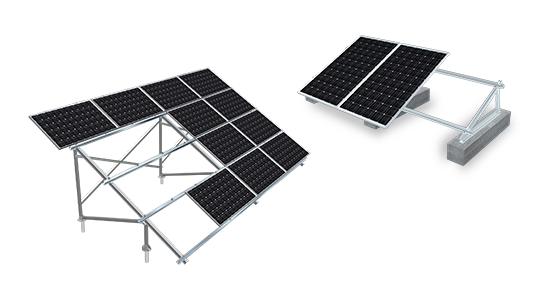What Is the Difference between Monofacial and Bifacial Solar Panels?
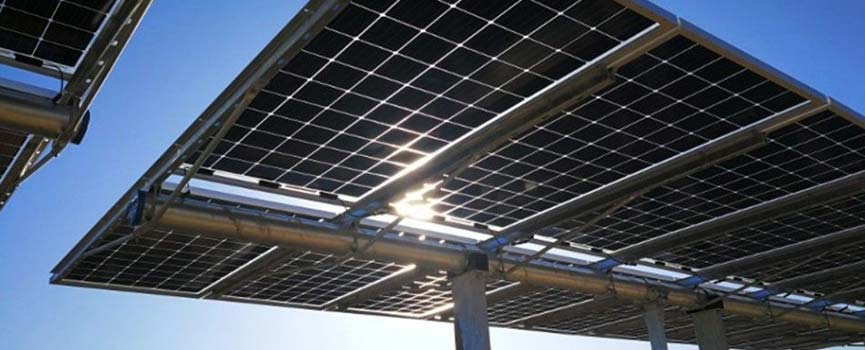
Solar cells have constantly been advancing and are now one of the most widely implemented renewable energy technologies around the world. There are two types of solar panels we will cover today: monofacial and bifacial solar panels.
With the continuous optimization of "cost reduction and efficiency increase" of photovoltaic power generation, monofacial solar panels and bifacial solar panels keep high attention and discussion from people in the photovoltaic industry. So, what's the difference between monofacial and bifacial panels? What are their advantages and disadvantages? Before we dive into this topic, let's define these two types of solar panels.
A monofacial solar panel only absorbs sunlight from the front surface of the solar panel while the bifacial solar panel features solar cells on both sides. As you can imagine, when you are producing energy from both sides of the panel, you increase the amount of electricity that can be produced. And that's precisely why solar panel manufacturers introduced bifacial solar panels. Because you get more out of them, which means more financial benefits from your solar energy system.
How Do Monofacial Solar Panels Work?
Single-sided modules are the most common and traditional type of photovoltaic panel, with a single-sided cell located on the front side. Monofacial solar panels function just like normal solar panels. They convert solar sunlight from the front surface of the panel into direct current, which is turned into AC with an inverter and then can be used to power our building and home.
How Do Bifacial Solar Panels Work?
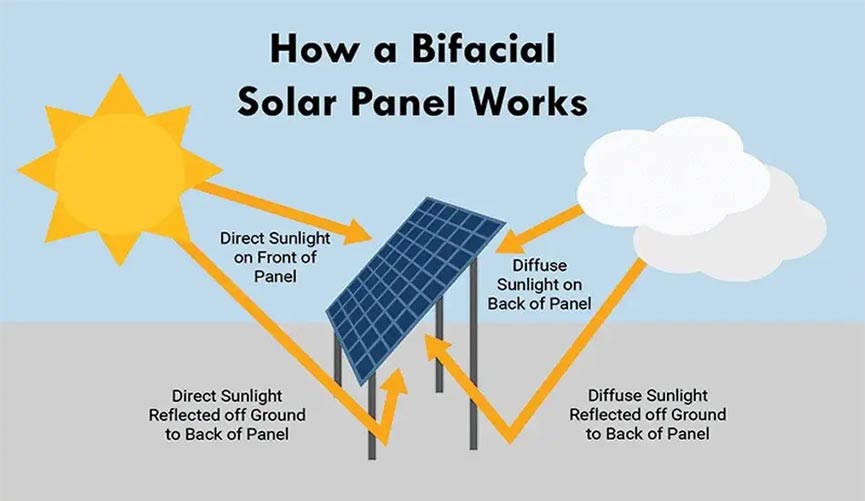
Instead of having a back sheet like monofacial, bifacial solar panels have a transparent back sheet, so both sizes of the panel can capture the sunlight. This allows the panels not only to absorb direct sunlight but also reflected light. It is typically only installed on the tiled racking system or ground bifacial solar mounting system because they produce more energy when the back side of the panel can capture more reflected light. The higher the bifacial module is tilted, the more power it produces from the bifacial panels.
Where Should Bifacial Solar Panels Be Installed On?
You must consider the surface that you will install your bifacial solar panels on is reflective. When bifacial solar modules are installed on a highly reflective surface, like a white roof or on the ground with high terrain clearance or a snowy area.
Bifacial solar modules are also effective in residential applications and are typically installed at ground level. However, for most property owners contemplating a rooftop installation, there may be better choices than bifacial panels. Bifacial modules find their optimal utilization in commercial or utility-scale applications, where the panels are positioned at an elevation and angled away from the mounting surface, thereby enabling light reflection onto the rear side of the panel.
Do Bifacial Solar Panels Need Special Solar Mounting Structures?
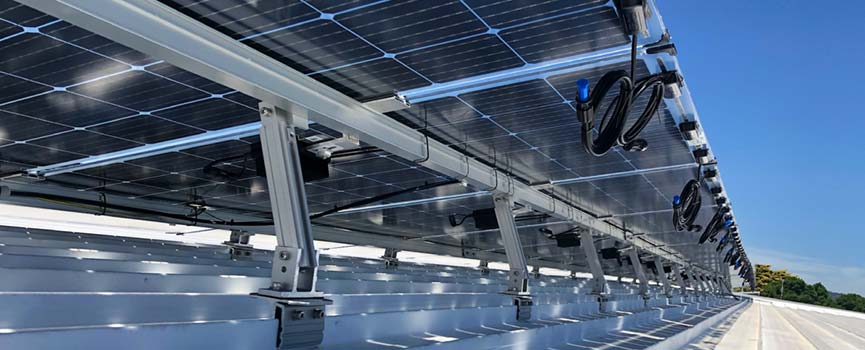
Solar mounting systems for bifacial panels need to be specially designed to avoid shade from solar structures on the back sheet of panels. It is required that the beams or purlins of solar mounts should not cross the solar cell area. Besides, bifacial solar panels are not suitable to install on a single-axis solar tracking system with a single-row array because the rotation axis of this kind of solar tracker will obscure the back side of the bifacial solar panels.
Mibet New Energy is a professional solar mounting racking manufacturer. We offer a wide range of solar mounting systems, including ground solar mounting systems, bifacial solar mounts, roof solar mounts, solar floating systems, etc. For specially designed solar mounts for bifacial panels, we have PGT4 ground mount solar racking and single-axis solar tracking system with double rows for your options.
Advantages of Bifacial Solar Panels Compared to Monofacial Panels
● Produce more power: as bifacial solar module can generate power from both sides of panels, it has higher efficiency.
● Durable: bifacial solar panels are covered by tempered glass on both sides. They are often more durable. Because the tempered glass is UV resistant and can withstand high temperatures and strong winds.
● Works Well in Diffused Light: The extra surface area also means that bifacial panels perform better in diffuse light. Making the long-term costs lower than monofacial panels.
● Reduced PID: In the instance of a frameless bifacial panel, the solar cells are less likely to suffer from potential-induced degradation (PID). This is where electrical currents stray from their intended path and as a result corrode the solar panels. Furthermore, bifacial panels without a metal frame don't require grounding, as there are no metal contacts on the exterior.
● Longer warranties: bifacial panels usually come with a long warranty of up to 30 years, while monofacial only have 25 year warranty.
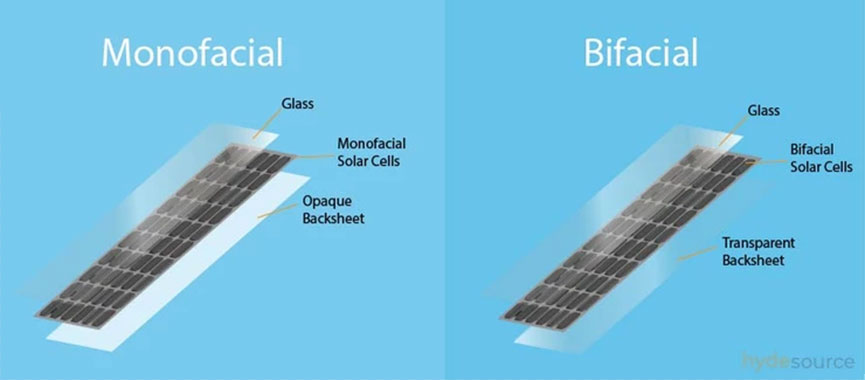
Disadvantages of Bifacial Solar Panels Compared to Monofacial Panel (Refer to This Table)
| Module Type | Bifacial Solar Module | Monofacial Solar Module |
| Initial Costs | 10% higher | lower |
| Weight | heavier | lighter |
| Installation Costs | higher | lower |
| Flexible | less | more |
Takeaways:
● The electricity generated by bifacial solar modules is 5%-30% higher than conventional single-sided modules. The precise magnitude of additional energy generated depends on the environmental conditions surrounding the solar panels.
● The power output from the rear side of the panel is different depending on the ground surface, such as grass, sand, comment, etc. You must consider the surface that you will install your bifacial solar panels on is reflective.
● The monofacial panel is easier to install because it is lighter and more flexible.
Conclusion
One of the biggest benefits of bifacial solar panels is producing more solar energy with each panel. So if you're looking to optimize the amount of electricity you can generate per square foot of space, bifacial panels have the edge. Most trusted panel manufacturers offer warranties that last 25 years to 30 years, and the panels could go on producing electricity long after the warranties expire. They'll provide you with a long-lasting way to produce cost-free and emissions-free electricity!
